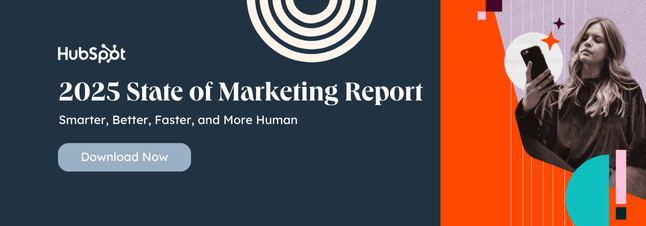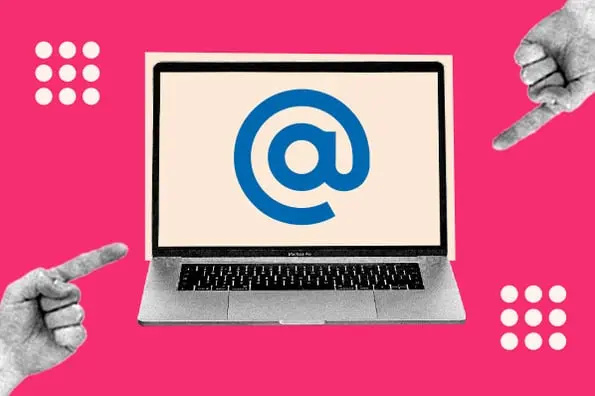Ready for a glimpse into the future? It’s 2024, and the marketing world is buzzing with innovation and new tech.

One big player stealing the spotlight is artificial intelligence (AI). We’re talking about smart, on-the-ball strategies beyond customer clicks. AI gives a new meaning to personalized customer journeys, data-driven decisions, and community building.
It’s not just about the tech — it’s about how we use it. AI isn’t a stand-alone wizard; it’s part of a bigger picture. From voice search to interactive content, several trends are reshaping marketing. So grab your notepad because we’re diving into how these trends will shake things up.
Technological Advancements Shaping the Future of Marketing
AI is a powerhouse in the rapidly evolving landscape of marketing. As strategies become increasingly tech-driven, AI is stepping up to offer personalized engagement, smart data analytics, and even stronger brand communities.
While challenges persist, for marketers aiming to stay ahead of the curve, AI integration isn’t optional — it’s a necessity.
How AI Becomes Your Best Friend in Customer Experience
-1.webp?width=650&height=433&name=benefits%20(1)-1.webp)
1. Know Your Customers Like Never Before
Ever wish you had a crystal ball to understand your customers? With AI, it’s like having one. This tech dives deep into customer data, learning behaviors, and preferences to offer you valuable nuggets of wisdom. Your CRM systems have a supercharge, featuring bells and whistles like real-time decision-making and sentiment analysis.
Quick chat: Sven Feurer from SAP shares a pretty exciting vision. According to him, with AI crunching all this data, both B2B and B2C brands are set to make customer experiences more prosperous and meaningful. Now, that’s something to look forward to!
2. Make Smarter Decisions, Right Now
Imagine having the ability to make snap decisions that are almost always right. That’s AI for you. Whether it’s knowing who’s using an ad blocker or suggesting personalized recommendations, AI has your back.
Plus, predictive analytics takes the guesswork out of the equation, helping you plan the perfect next move for each customer.
Hot take: Mike Orr, a seasoned advisor, tells us that AI, combined with Natural Language Processing, offers data and actionable insights. It’s not just about what customers say — it’s about what they want and need.
3. Community Building on Steroids
Goodbye, scattergun approach; hello, targeted communities! AI enables marketers to tap into specific audiences through social media platforms. The result? Communities that not only engage but also advocate for your brand.
Real talk: Fantastic content still rules, but AI helps it spread faster and more efficiently, igniting community engagement like never before.
4. Streamlining Workflow Like a Pro
AI isn’t just customer-facing; it’s also your internal operations champ. From collaboration to project management, AI ensures your marketing team sings harmoniously.
Quick take: Technology is smoothing out the nitty-gritty of team collaboration, making campaign generation and implementation a breeze.
Let’s Talk Numbers
- 63% of shoppers say that they would pay more for a product or service to get better customer service.
- Brand loyalty is fragile; 86% will break ties after just three bad encounters.
Yes, There Are Speed Bumps
AI has potential, but it‘s not a magic wand. The road to full adoption has a few potholes — data silos and cost misconceptions, to be exact. Addressing these issues is crucial for any brand serious about tapping into AI’s immense promise.
Future of Marketing — Trends and Predictions

1. Artificial Intelligence
AI refers to the use of machines to mimic human intelligence processes. This technology enhances the ability to analyze vast amounts of data, predict user behavior, and automate tasks.
AI can be used in customer service chatbots, personalization, data analysis, and predictive engagement. It also recommends the next-best actions for customers by learning from similar customer behaviors.
The impact of AI allows for hyper-personalized customer experiences, optimizing business processes, and improving key performance indicators like customer loyalty and engagement. Brands like Reebok and Nespresso use AI to provide personalized content and product recommendations based on past customer behaviors.
With the rise of data-driven decision-making, AI’s role in understanding and targeting audiences effectively becomes even more crucial.
2. Interactive Content
Interactive content requires active engagement from the user, offering a more immersive and engaging experience. This type of content can range from quizzes, polls, and interactive videos to augmented reality experiences. Its impact increases user engagement, provides valuable insights into user preferences, and can lead to higher conversion rates.
Brands like BuzzFeed have successfully used quizzes to engage their audience and gather data on user preferences. The growth of short-form video makes interactive content a significant trend.
3. Voice Search
Voice search allows users to search the web using voice commands rather than typing. Brands can optimize their content for voice search, ensuring they appear in voice search results.
As more people use voice-activated devices, voice search optimization becomes crucial for visibility and brand recognition. Brands like Domino’s Pizza have integrated voice search capabilities into their ordering process.
With the continued importance of website SEO, voice search optimization will be a crucial focus for brands.
4. Personalization
Personalization involves crafting tailored experiences or messages for individual users based on their behaviors, preferences, and past interactions. Through marketing software that integrates client behaviors and transactions, brands can send personalized messages or offers.
This enhances the connection customers have with brands, leading to increased loyalty and sales. Amazon uses personalization to recommend products based on a user’s browsing and purchase history.
The trend of humanizing brands and creating content that reflects brand values complements the personalization strategy.
5. Data Analytics
Data analytics is examining data sets to come to conclusions and uncover insights about user information. Marketers can analyze customer behavior and interactions to design more effective campaigns and allocate resources efficiently.
This provides a deeper understanding of consumer behavior, leading to more informed decision-making. Netflix uses data analytics to understand viewer preferences and produce content that resonates with its audience.
The importance of quality data and its relevance in marketing strategies is underscored.
6. Building Strong Communities
Building strong communities involves leveraging online platforms to foster engagement and sharing. Brands can engage with their target audience on social media platforms, encouraging discussions, feedback, and content sharing.
This strengthens brand loyalty, increases user engagement, and amplifies word-of-mouth marketing. Brands like Glossier have built solid online communities where fans share product reviews, tips, and photos.
The growth of branded social media DM tactics and influencer marketing aligns with the importance of building strong online communities.
7. Simplifying Workflow
Simplifying workflow means using technology to streamline marketing processes and improve collaboration. Through collaboration tools and project management software, marketing teams can coordinate efforts more efficiently.
This leads to faster decision-making, reduced errors, and more cohesive marketing campaigns. Companies like Trello and Slack offer tools many marketing teams use to streamline workflows. The high workload for marketers emphasizes the need for automation tools and efficient workflows.
8. Chatbots
Chatbots are AI-powered tools that can interact with users in real time, answering queries and providing information. They can handle customer service inquiries, deliver personalized offers, and even facilitate transactions.
This enhances customer service by providing instant responses, reduces operational costs, and can drive sales. Chatbot on Facebook Messenger offers product recommendations and reviews to users. The rise of automation showcases the increasing importance of tools like chatbots in the marketing landscape.
Ready to dive deeper and stay ahead? Check into HubSpot’s comprehensive State of Marketing report to transform your marketing approach.
Embrace the Future
By now, it should be evident that if you want to be at the forefront of marketing in 2024, you cannot overlook these pivotal trends. AI and other emerging technologies are not merely the future; they are the present. It’s essential to transcend traditional strategies and adjust to this rapidly changing landscape.
Editor's note: This article was originally published in April 2010 and has been updated for comprehensiveness.

![Download Now: Free State of Marketing Report [Updated for 2024]](https://no-cache.hubspot.com/cta/default/53/b0f73a5e-16e4-41fd-9511-8564efc560a7.png)

![Millennials vs. Gen Z: Why Marketers Need to Know the Difference [New Data]](https://knowledge.hubspot.com/hubfs/Untitled%20design%20-%202024-05-14T151228.178.jpg)


![[UPDATE] How to Make a Facebook Business Page That Keeps People Engaged](https://53.fs1.hubspotusercontent-na1.net/hubfs/53/how-to-make-a-facebook-business-page-compressor.jpg)


![How to Delete Your Instagram [Easy Guide]](https://www.hubspot.com/hubfs/delete-instagram.png)

